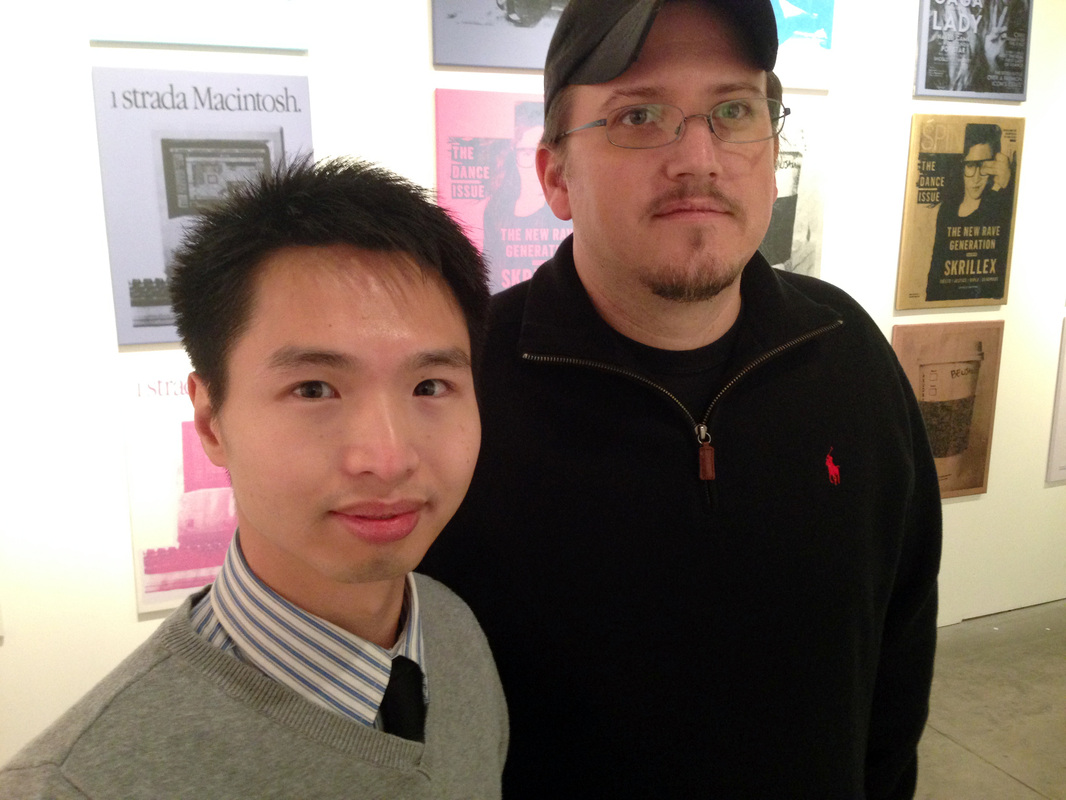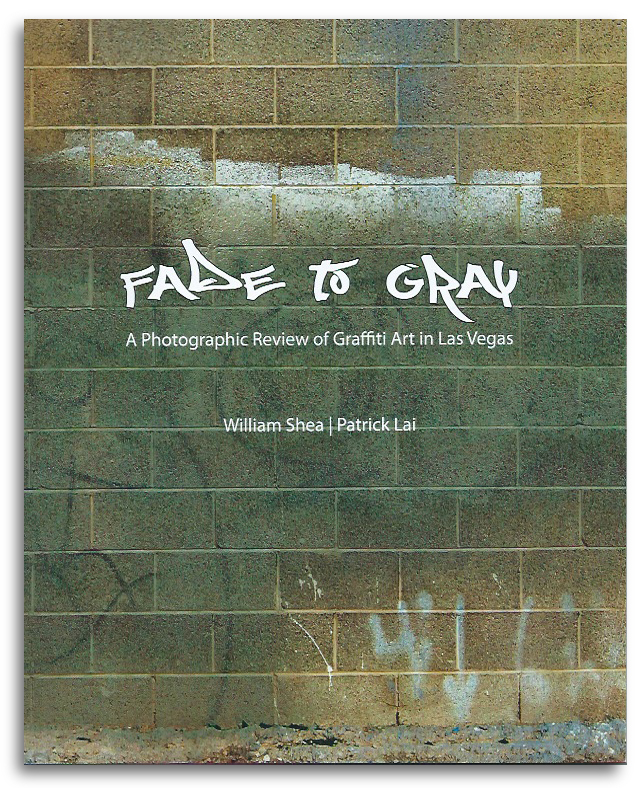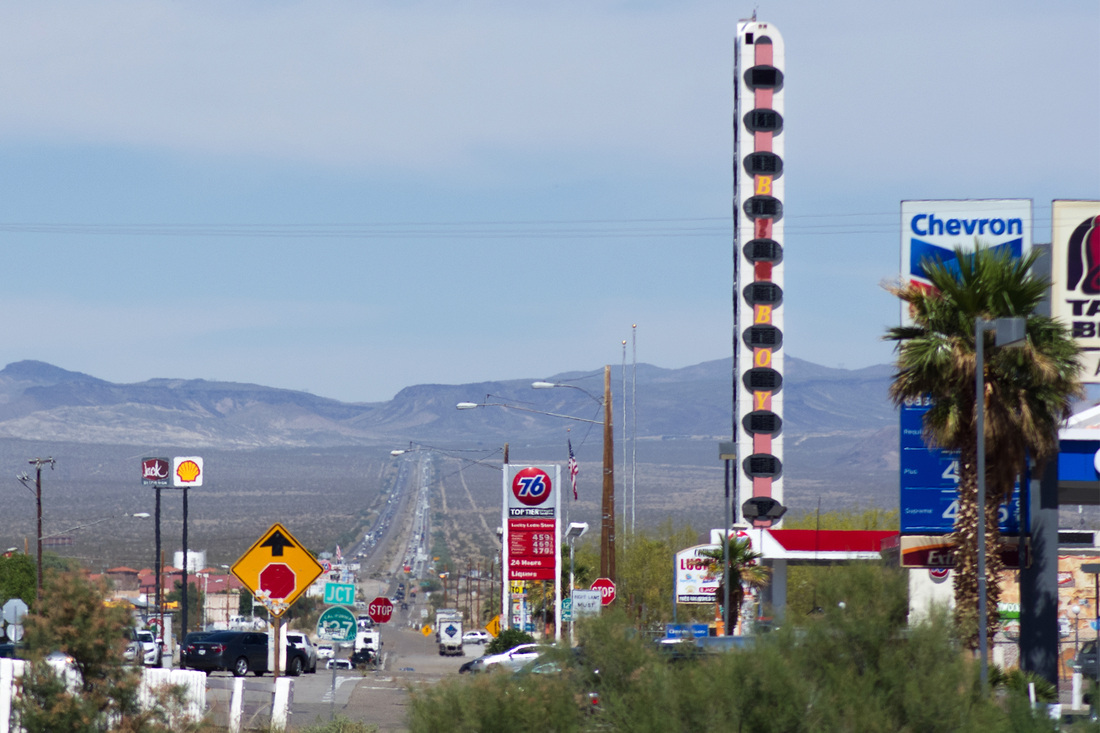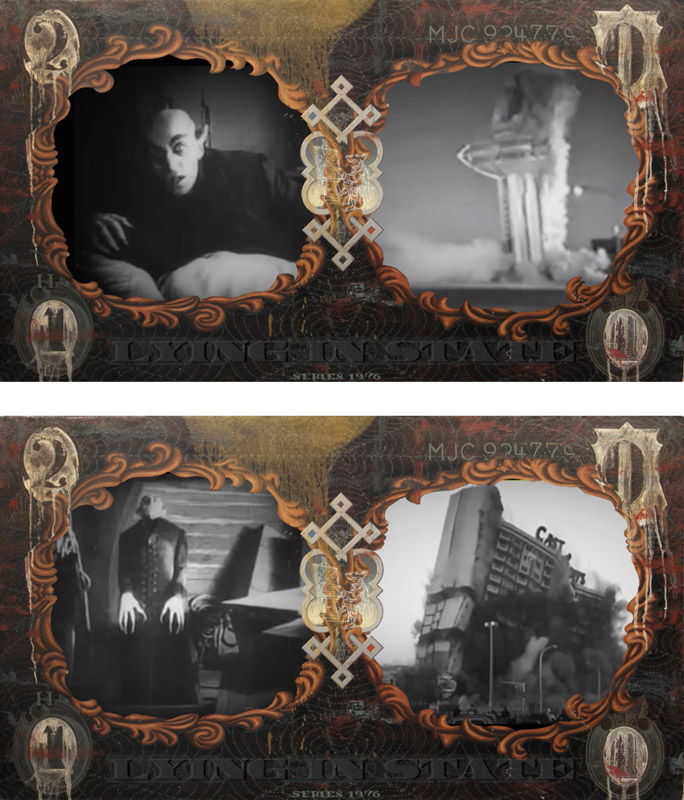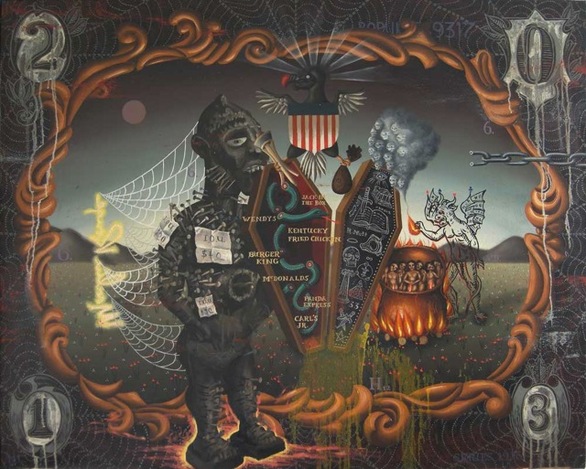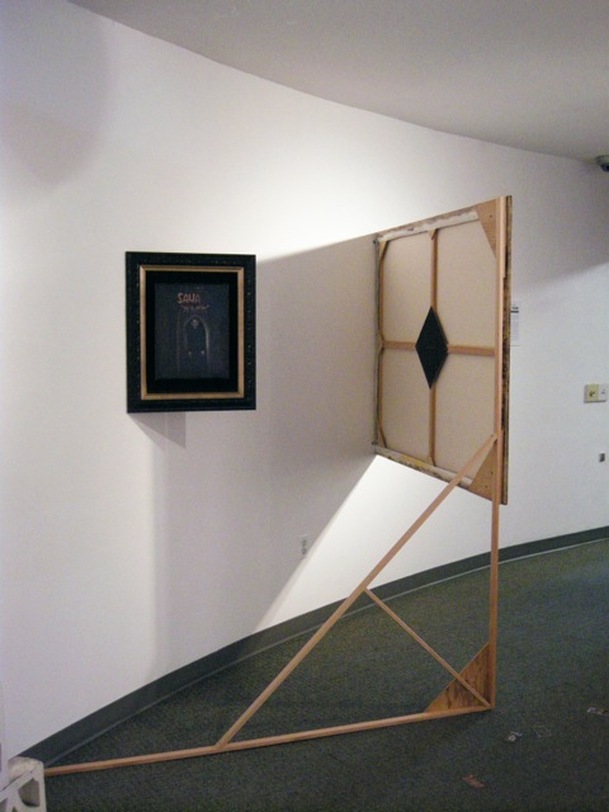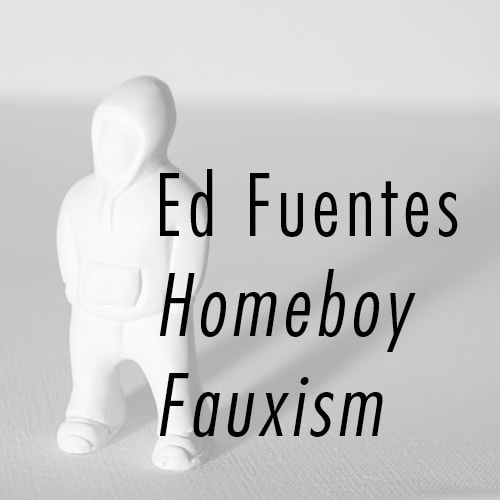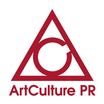|
Patrick Lai and William Shea at Amanda Harris Gallery of Contemporary Art. December 2013. FIELD NOTES: It was written because here there was no real documentation of local graffiti in the greater Las Vegas valley, said William Shea on KNPR's State of Nevada broadcast of June 11. Shea and "Fade to Gray" co-author/photographer Patrick Lai published a 14-month photographic record of walls before they were buffed out or painted over. It was self-published to maintain paper quality, said Shea when I picked up a copy at a book signing in December. It's highly recommended. Graffiti Artists Make A Mark On Las Vegas I [KPNR] A Preview from October 2013: I Arts Vegas
Baker thermometer in March 2014. Photo: Paint This Desert. LIGHTS ON: LaRae Harguess' parents created the modern version of roadside vernacular, the 13-story thermometer in Baker, now back under family guardianship. He told the LA Times a “soft lighting” for the landmark will be held July 10. I LA Times PERFORMANCE: Justin Favela is in northern Nevada and mounted a “Taco Takeover” for 2014 London Biennale: Las Vegas Pollination. I Las Vegas Weekly EDC FYI: The Mayan Art Cart make Las Vegas debut at Electric Daisy Carnival. I Dancing Streets DEVIANT 101: Learning deviancy is a commodities futures if you consider entrepreneurs as a creative industry more in common with being an artist than a business person. There, you got yourself a new reason to major in humanities I UNR via RGJ James Marshall at SMoCA's outer courtyard wall with his mural titled "Radiate" 2014, co-commissioned by Scottsdale Public Art. Image copyright Sean Deckert / Calnicean Projects. WALL: Scottsdale Museum of Contemporary Art and Scottsdale Public Art bring former graffiti artist James Marshall to Arizona I SMoCA PLUS: A mural tour of Scottsdale, Arizona I AZ Central HISTORY: Charlie Burton is the fine arts conservator with an August 7 deadline to complete the preservation of “Greenlee” by Hal Empie, a 30-foot long mural mural depicting the hIstory of that Arizona county. I The Copper Era TEMP ARIZONA. KVNF on a digital photograph installed as a mural in Arizona and referred to as street art. The mural by Chip Thomas is 25 feet high and 40 feet wide works within the substrate of the building. The expected lifespan of Thomas' mural of a young Hopi at the Church of Art is two years. ISOLATED DIP IN THE POOL: The remote "Social Pool," by Austrian artist Alfredo Barsuglia, as reported by Carolina A. Miranda of the Los Angeles Times. "The diminutive swimming pool located somewhere in the southern Mojave Desert between Joshua Tree and Apple Valley." "Lying In State (Soundtrack by Superchunk)" looped digital video projection by Matthew Couper at the Winchester Cultural Center. With paintings, video and installation by Matthew Couper, “Horror Vacui” is a gothic frolic through the darkness of juxtapositions. Couper drags the ideals of spectacle and simulacra indoors to show how Vegas imploding casinos to make room for another casino makes the city a vampire. They are landmarks destroyed “only to be raised again on the same ground. Undead, blood-sucking, nocturnal beings rise each night from their coffins," reasons the artist. In split screen footage, Nosferatu makes his entrance while the Sands topples in the dust cloud of its own remains, and become ghosts. “Horror Vacui” is also about the false fronts of the Strip when a a painting doesn’t hide it’s utility. The wooden frames holding up detailed pop folk art of cultural figures as social ephemera converts the painting into an installation, suggesting The Strip isn’t urban infrastructure. It too is a set of temporary installations. On another wall, a point-of-purchase stand peddles t-shirts and caps that converts names of celebrity artists into the typographic branding of dead casinos. That may seem like supplemental to paintings like “'Vampire Weekend,” but the exhibition title are like the worlds on the Strip; a truth that you are expected to believe in. “Horror Vacui” is more about Las Vegas reality of being a constant re-animating body, and less about the visual culture of the undead. And it’s affectionate satire worthy of a seductive vampire who kisses before the bite and blood let. Couper’s from New Zealand and moved to Las Vegas in 2010 with no shame in the decision. Still, one wonders what others from his homeland think of his new home. It seems we are in an American City with enough courage to be it’s big ole’ bad and gaudy self. “I think it had to do with the beauty and clichés of Vegas, and that what a lot of people outside of America see,” he said in his crisp dialect. “And it’s smart American culture; taking all the places on The Grand Tour and sticking in one place for convenience.” The Grand Tour was the post-Oxbridge journey, an academic after-party safari, through France and Italy taken by young elite Englishmen seeking Western civilization’s art and culture in the sixteenth century and seventeenth century. “From inside America, Las Vegas does tends to be the cultural whipping boy because it populist by nature,” said Couper. “But that’s how it operates and how it’s successful, with the lights and with the people who have been here -- like Elvis. It’s such a glorious statement.” Horror Vacui stays alive at Winchester Cultural Center until July 18. Matthew Couper "Facade" The back of "Facade"
|
An Online Arts Journal
Exhibition:
February 2 – March 31, 2019 Artist Reception and Gallery Talk: Sunday, February 10, 2019, 4 p.m.–7 p.m. S P O N S O R
ARCHIVES
January 2019
TAGS
All
|
